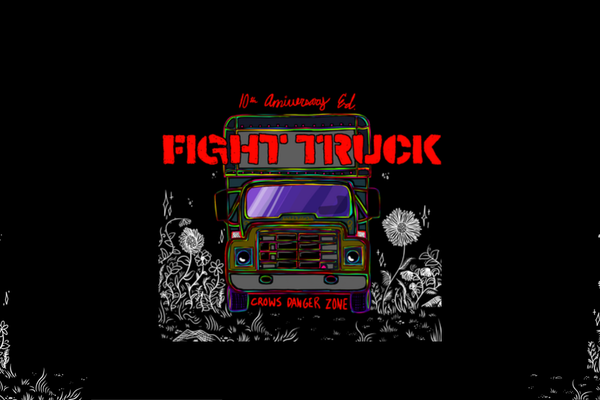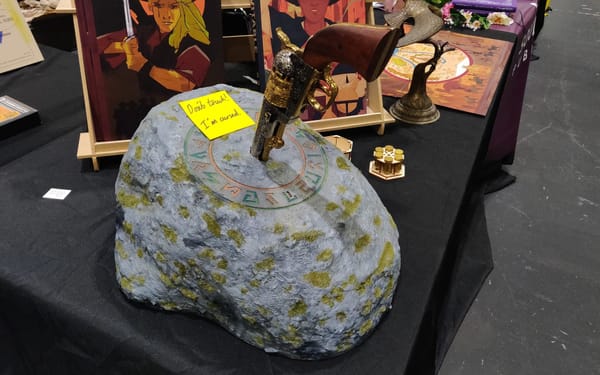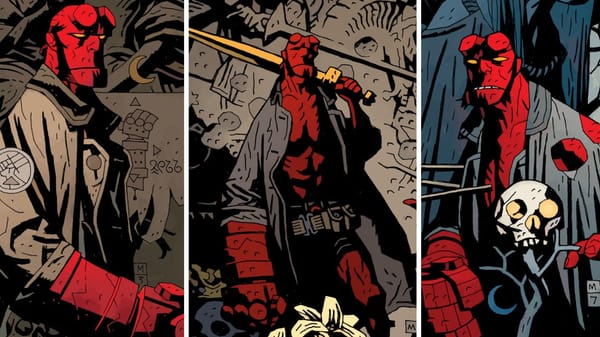I killed God with the power of good graphic design
MIRU’s information layout saved it from disuse at my own hands.
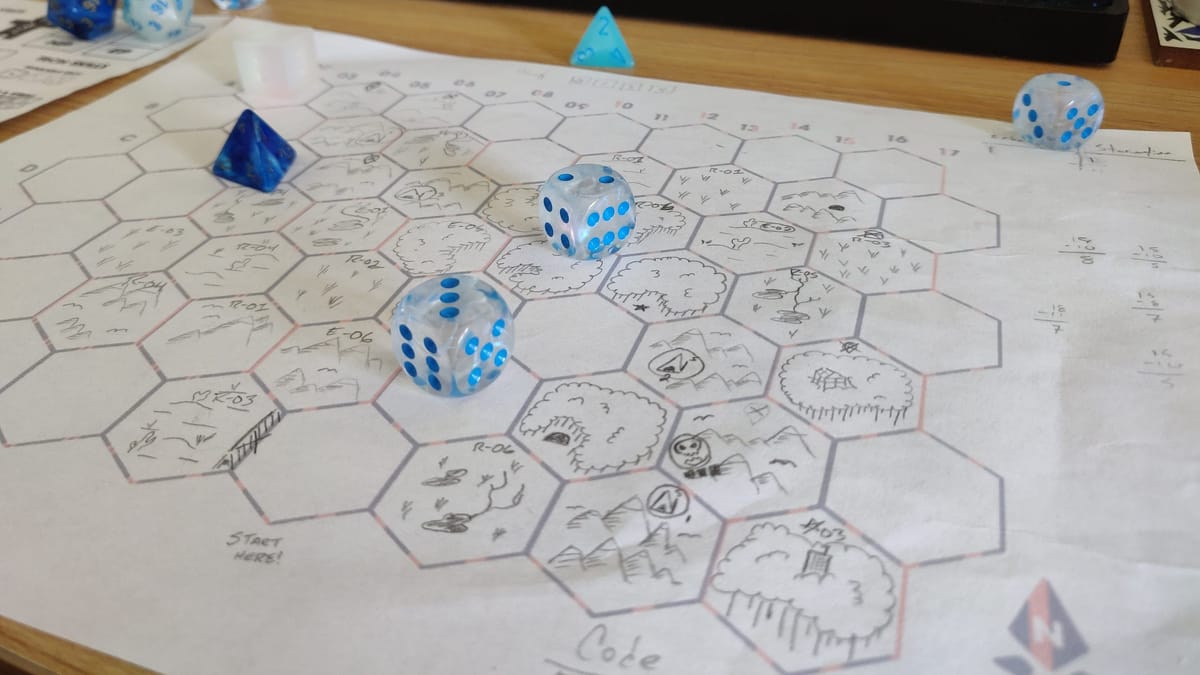
I struggle to maintain the momentum of my solo games. Without the structure of a group, days between sessions can stretch into weeks and then months of looking regretfully at books piled near my desk. This is a complex problem, owing to the realities of both my brain and my profession. Consistency eludes me. When I do return, my notes resemble chicken scratch. All of the context — character motivations, budding ideas, and even the rules — have bled away. Better to toss everything and start fresh, and I can’t think of a more effective buzzkill. Plenty of solo RPGs currently sit, half-started and mostly forgotten, but I’ve only finished one: MIRU, by Hinokodo. And I owe its mental stickiness to some damn good graphic design.
The first entry in an adventure trilogy, MIRU presents a simple structure with a simple premise: a hexcrawl wherein you must find and kill god. Well, at least a god. It’s a little complicated. The world ended thanks to runaway capitalism killing the planet, and now ubiquitous robotic laborers help humanity maintain an agrarian society while also preventing them from repeating their ecological fuckups. An “accident” leaves your character’s brother dead and puts them on a warpath that wends and wefts across a hexgrid map, ultimately leading to a confrontation with a colossal metal avatar. Every step is a battle against society’s ruins, fiercely reclaimed by nature, and legions of automatons bent towards cutting your mission short.
MIRU’s mechanics aren’t groundbreaking but still present a satisfying loop: move to a new hex, roll to determine one of six biomes, explore ruins or overcome combat encounters, eat rations, rest up, repeat. Like many hexcrawls, this game’s tension hinges on resources. You will need rations to stave off exhaustion and replenish your health. Scrap metal and physical crypto coins (billionaires are canonically stupid in MIRU) allow you to train skills, craft weapons, and resupply in the occasional village. A calendar marks the days between critical cutscenes, meaning that, above all else, the player’s directive is to survive.
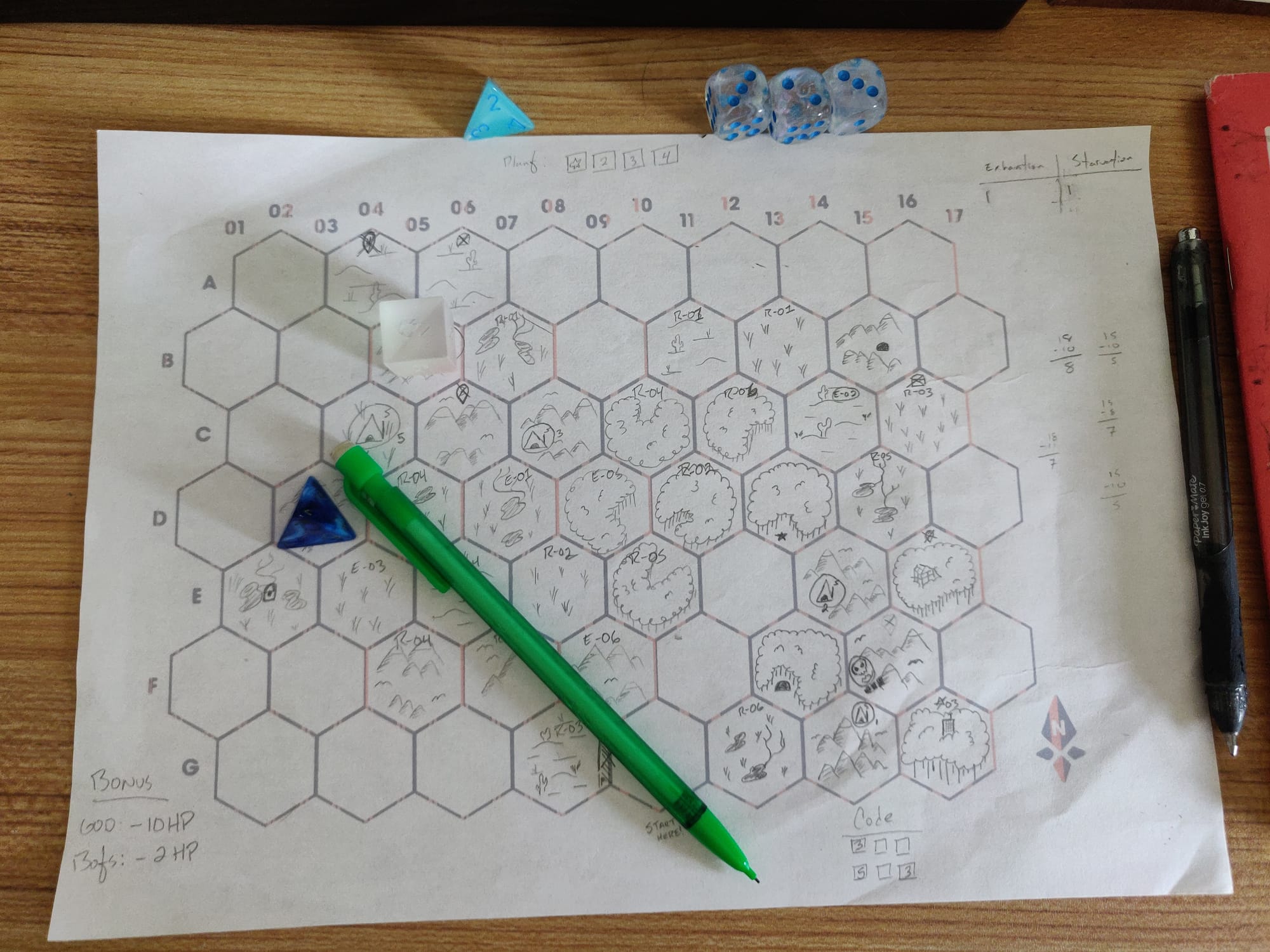
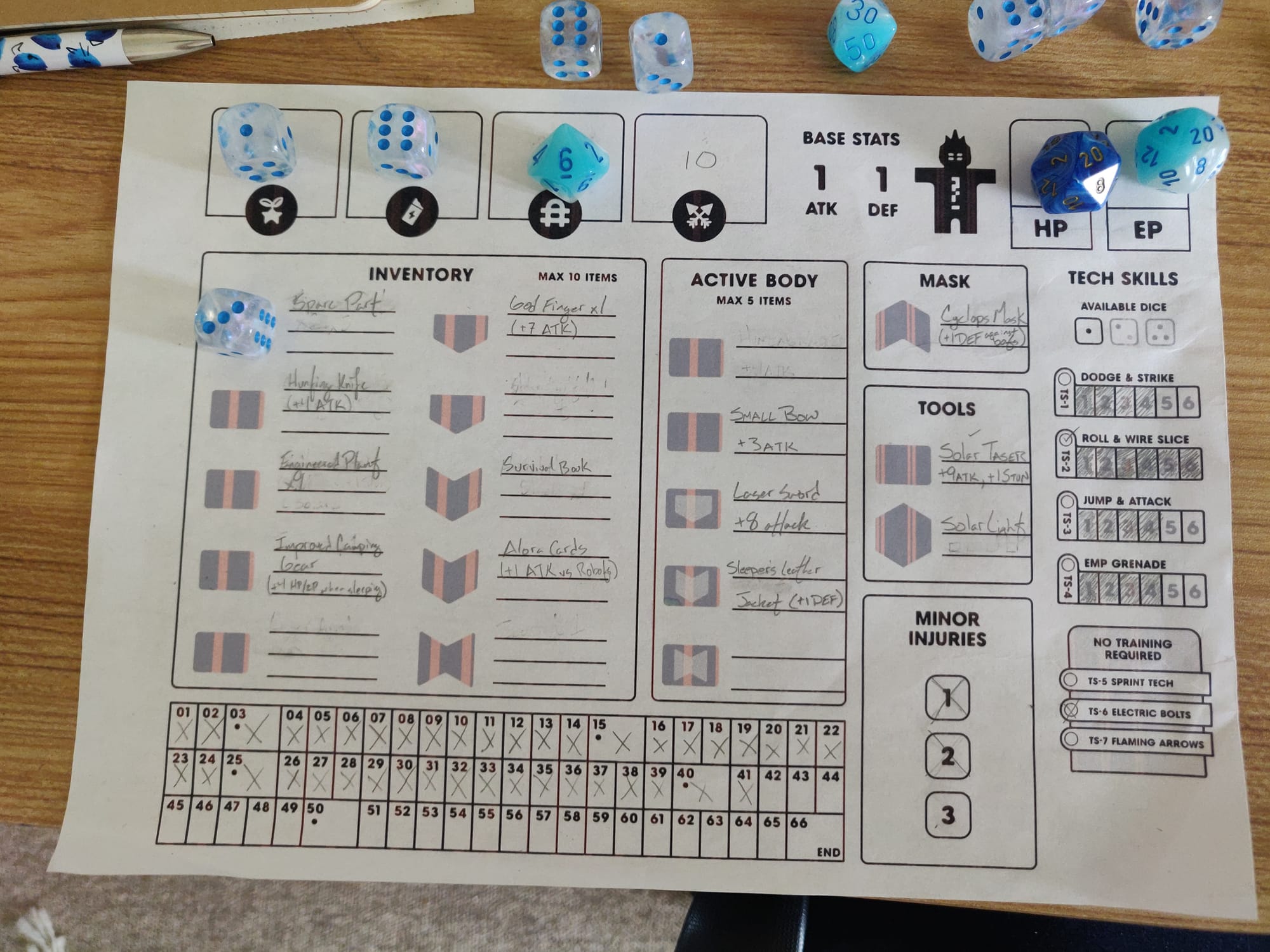
My map (left) and character sheet (right) near the end of MIRU's adventure. | Credit: Rascal
All of this, including drip-fed narrative bits and the placement of dice on my character sheet, should have slipped between the mesh sieve of my memory during the first hiatus – a three-week break as I moved across the Atlantic. And yet, when I pulled the red zine from a cardboard box and cracked it open, it was surprisingly easy to fall right back into the loop. The book is simply laid out well. Its first pages explain recommended materials and necessary terms before spending four full pages on a step-by-step process of moving through each in-game day. Chunky bars in stark red and black separate digestible paragraphs. There is a third color, gray, to denote optional rules for weather and first aid, at least in the 2025 edition.


